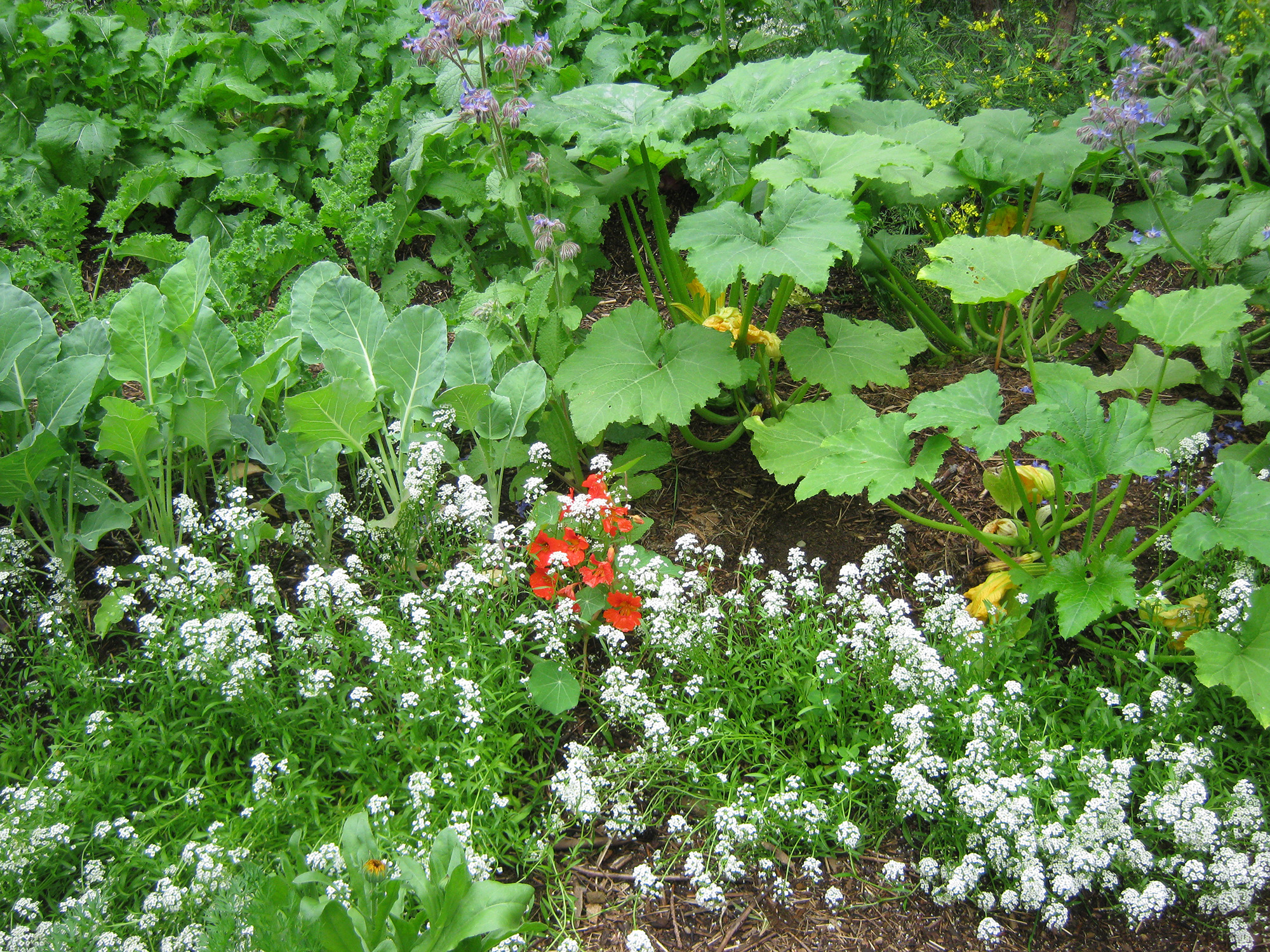Integration is a so important aspect of permaculture design. Nothing is more productive than two systems working together – unless it’s three or four or five systems working together. The more support a component of a permaculture design has, the greater the success it will have.
Having systems that support each other is one of the mainframes of permaculture design. If you create your permaculture property by isolating each element from the others, you are going to miss out on a LOT of benefits. The work will be harder, the production will be less, and the expenses will be higher. So don’t even go there. Integrate or bust!
Let’s look at some examples.
Chickens, compost & gardens
Now, I’m sure that nobody likes the chickens actually getting into the garden unsupervised. What a disaster! They dig and they scratch and they peck holes in everything. But! The connection between chickens and gardens can be an extremely productive partnership on a homestead.
Feed the chickens the garden scraps, and watch them turn it into excellent stuff to put in the compost. Or just build the compost pile right in their pen! They’ll dig and scratch and poop, and be happy to do it. If you turn the pile a few times for them, they’ll eat all the bugs and seeds in it, getting a large part of their food needs taken care of for free!
Once all of that goodness is picked through, you can move it to a compost pile outside the pen to finish breaking down, then put it on the garden when it is ready.
There are times when letting the chickens into the garden can be a good thing. At the end of the season, when you’ve harvested all you can, let those hens in and watch them shallowly till your soil, eat an amazing amount of pests, and poop out their chicken gold all over the garden.
This is a great way to clean up the garden without lifting finger. If you still have things growing in part of the garden, work out a temporary fencing system that only lets them work in the unused parts. There’s always a way. Ducks are also great critters to let into the garden to deal with pests such as slugs.
When deciding where to put chickens, compost and gardens, consider how best to integrate them so that the work you put into each component is less than the production that comes out. Build chicken coops, pens, and compost bins, uphill from the garden, so the goodness goes down hill. Carry a bucket of scraps up to the chickens each day, then in a few weeks you can wheel down a bunch of compost!
Connect gardens, compost and chicken runs in such a way that you can open them up, or close them off.
Greywater
Another great area to work with integrated systems is in the home. Most specifically, your water. Greywater (or grey water) systems are an excellent way to integrate water and garden systems. Setting up a way to use water from your sinks, showers and laundry in the landscape makes so much sense.
It can sometimes be tricky to retrofit a conventional home for a greywater system, but there’s always a way. If you’re building new, you can create integrated garden and home water systems so no water is wasted. And don’t forget to build in a system for collecting rainwater while you’re at it.
Greywater needs to be ‘cleaned’ before it can be used in permaculture gardens. Setting up a reed bed system, or just building mulch pits to absorb and filter greywater isn’t all that hard. And the benefits are tremendous.
All that good water won’t just go down the drain and into an already taxed septic system. It will go outside, through your chosen filtration system, and then on to water the plants and trees in your landscape. How cool is THAT?
In this day and age, when water is at a premium, greywater systems are the only way to go. Why waste all that perfectly good water? I can’t build a greywater system here on this rented land. But I do some greywater recycling nonetheless. For example, I wash my dishes in a dishpan rather than the sink. That way I can empty it outside, and water some of the non-vegetable plants we have growing here.
We already save a ton of water by not flushing it down the toilet (pee on the compost, poop in compost toilets), so it only makes sense to keep it going, and find other ways to save or reuse water.
All that water that goes down the drain is such a waste. Water doesn’t have to be ‘one use’ only. It is a precious commodity, and we should try to treat it accordingly.
Integration is King (or Queen)
Integration is at the root of a properly functioning permaculture system. Everything works together in nature, and that’s what we’re trying to emulate in our permaculture design.
Closed loop systems – where each component supports another, and is in turn supported – are the most successful systems. They create the least waste, take less work to run, and are more environmentally friendly. They also create the healthiest food! And that’s the big one, for me at least.
Segregation is rarely a good thing. Nature doesn’t segregate. All systems need to work together if they are all going to survive.
Each system we set up within our permaculture design needs to work with all other systems to ensure a sustainable, low-maintenance, highly productive site.
If you have any questions or ideas about this article, please feel free to drop me a message below. Thanks for hangin’ out on my site.
Health, Hope & Happiness
Tracy
